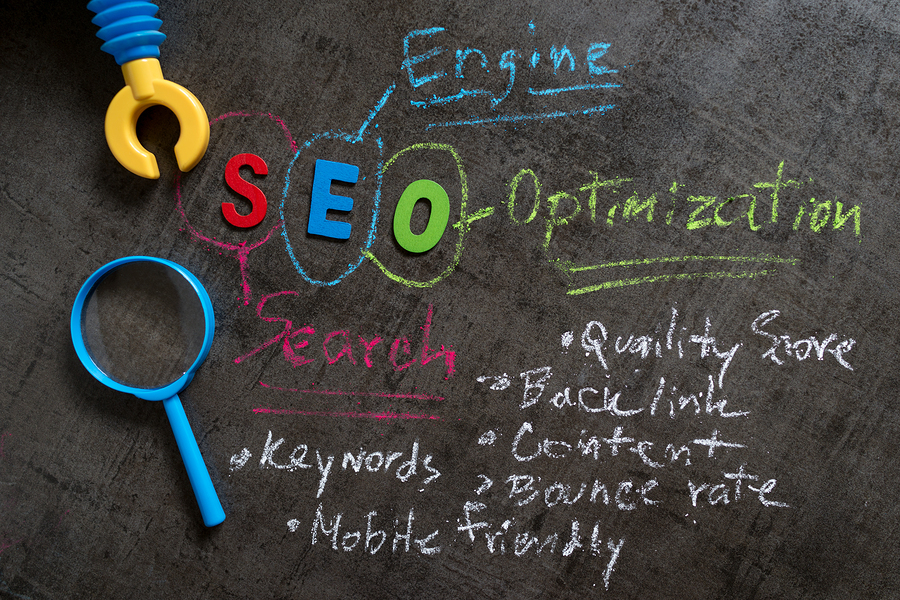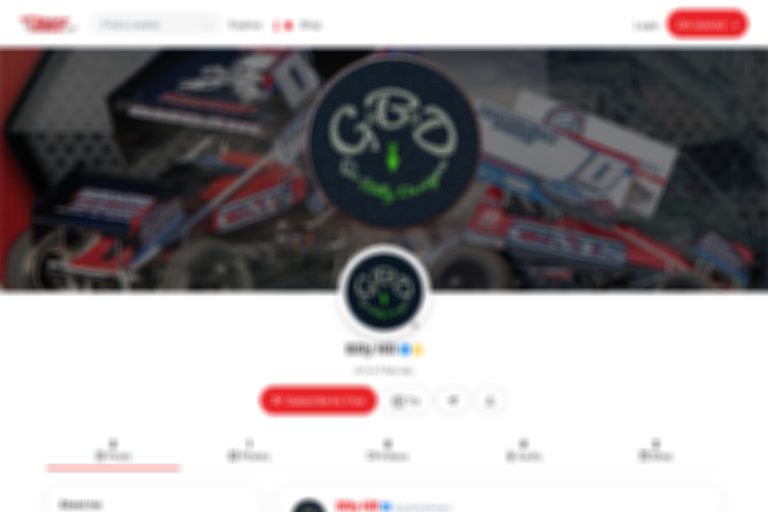Website's Speed Optimization

Project Research
If there’s one place first impressions are absolutely critical, it’s your website—and we’re not just talking about design and content. On top of that, speed optimization is one of the most important determinants to its success.
A slow loading website can damage your reputation and cause you to lose out on traffic and conversions, ultimately costing you money. Conversely, a high performing website will have a domino positive effect on your business’s success. It will attract more visitors, in turn increasing sales, leads and bringing in more customers.
The very first step in ensuring you have a fast loading site is to create your website using a robust website builder, which provides optimized technology from the get-go. However, your job isn’t over after this, it’s in your hands to make sure the content on your site doesn’t get in the way of its performance.
There are many factors to consider, but you’ve come to the right place. This article will provide you with everything you need to know about website speed optimization and how to improve your site’s page speed.
What is page speed
Page speed refers to how fast content on your webpage takes to load. There are many ways to measure this (for example, from first contentful paint, to speed index, to large contentful paint)—but one of the most meaningful ways to define page speed is by time to interactive.
Time to interactive is how long it takes a page to load to the point where a user can interact with it. This might mean clicking on a CTA, choosing to play a video, or any number of actions a user can take on a given page.
Your next question is probably, “what is considered good website speed?” While the answer to that is industry specific, it’s highly recommended that, on average, your pages load in under three seconds. It’s also important to remember that page speed times can vary across different pages of the same site, as well as across mobile and desktop.
Why page speed matters
There are four main reasons why page speed matters when it comes to website speed optimization:
Usability
It may seem obvious, but the faster your pages load, the sooner a website becomes interactive. We’re referring to loading items such as the website menu, visual content, buttons and more— which help visitors take action on your site. Allowing these features to be visible and usable faster by optimizing for page speed will create happier, returning visitors. It’s as simple as that.
Users
Users are more likely to engage with your website when they can move through processes quicker. For example, if you have an online store and each step of the checkout process takes more than a couple of seconds to load, it’s understandable when potential buyers abandon the process altogether.
The same goes for any action a user tries to take, such as filling out forms or jumping between pages. Website speed issues that limit user engagement will have a knock-on effect on conversion rates, and the number of visitors who will return to your site.
Conversions
One specific goal most site owners have in common is conversions. Studies show that even an 0.1 second improvement in your website speed can have a positive impact on your conversion rate, funnel progression and customer engagement. If visitors can’t utilize your features fast enough, they’ll move on to the next one.
Search engines
Google takes into account website speed when ranking sites (known as SEO, Search Engine Optimization). Therefore, if you want yours to appear higher in specific keyword search results, you’ll have a better chance for every millisecond faster your pages are visible to the eye.
How to measure page speed
There are a number of ways to measure page speed on your website. One of the most reliable and popular methods is using Google Page Speed Insights, where you can simply submit your site url and wait for Google to deliver a report on your site's performance.
The report contains a number of metrics, or Core Web Vitals, which Google includes as another potential ranking factor when determining how high to rank a page in its search results. A good (green) score may benefit your sites overall rankings, and individual page rankings in search. A low or warning (red) score may impact negatively on your site’s overall and individual page rankings.
Google page speed
Google Page Speed Insights will rate your site’s overall speed performance using a score out of 100. A score between 90-100 is considered optimal, while anything lower than a score of 59 is considered a warning, and should push you to prioritize your website speed optimization.
Creating a site with our CMS? Even Google agrees, we put performance first, We always make performance our priority and it definitely shows, both in monitoring tools and in their user's experience.
With a our web stats site, page speed insights and current loading speeds can be found in the dashboard within DVMS WebStats Analytics. This data is pulled from your site users and Google PageSpeed Insights among others, giving you an easily accessible way to measure page speed.
Other Tools
Using other different performance testing tools to measure page speed will invariably lead to different scores. Each platform gathers their analytics and data in different ways, and this can impact your page speed score at any given time. What is most important, however, are the steps you can take to improve your score, which we will address below.
How to improve page speed
Generally speaking, if you choose the right website builder, many of the steps necessary to improve page speed and website performance will be built-in. All you will need to do is focus on measuring your page speed from time to time, while understanding the impact of your design and content on the performance of your website.
Below, you’ll learn how you can boost a website's performance and page speed to make sure that both your customers and Google are satisfied. We have also included some handy tips that you can use to give your website speed optimization the very best chance.
Here are the foundations of how website speed optimization happens:
- Optimizing media
- Simplifying code
- Employing a CDN
- Utilizing lazy load
- Avoiding plugins
- Mobile first
- Deploying caching
- Optimizing content
01. Optimizing media
- Large images can be a huge block to improving page speed. Image quality is important—but it has to be balanced with performance. To do this, there are a number of ways you can compress images.
- By far the best option is to opt for a website builder, like our custom CMS, which automatically optimizes media on its servers by resizing, cropping and transforming it. This optimization delivers the best quality, across a range of devices.
- When making a website, changing your approach to saving images can have a positive impact on your site’s page load speed. Some best practices you can deploy on your site include: saving images as JPG instead of PNG (JPG files are smaller and consequently load faster), using SVG files when possible (which are even smaller and work well for shapes or logos), and finally, placing larger images further down the page so they have time to load while users focus on your above the fold content.
- Nothing makes a page pop more than animated GIFs—we get it, we love them too—but there is also nothing that slows a page down more. Therefore think very carefully before using them, and if you must, place them lower down on your page. Limiting the number of frames your animation has and keeping the dimension size small can also stop design features impacting on your page speed scores.
- Another great website speed optimization tip (if you really can’t live without some form of animation on your site) is to opt for video, since it uses smaller file sizes than animations.
- Sometimes simple is better, and experts agree. One of the easiest ways to improve your site performance is to reduce your site’s complexity. This starts with your design and content—specifically your images—and extends into the setup and functionality of your website.
02. Simplifying code
- Complex code, or code that has not been formatted properly, can slow down page speed. Using simplified code makes it easier for Google to crawl your site, which also makes it easier for pages to load fast (anything that makes Google’s life easier is a win for your website). Choose a website builder that utilizes simplified code on all of its pages so you won’t need to worry about checking it or cleaning it up, and can rest assured your pages are optimized for performance.
03. Employing a CDN
- A CDN (content distribution network) refers to servers and data centers placed in different geographical locations, which then deliver content to websites in their region. This speeds up content delivery times and consequently reduces load times. Wix’s network of global CDNs means your site's pages are optimized for performance, regardless of where in the world your site is located.
04. Utilizing lazy load
- Lazy load means delaying the loading of website content or media which is outside of the user's initial view. This happens automatically with many website builders, which often deploy lazy loading on all of their page. You can also do your part by placing larger or higher resolution elements lower down your page, giving them time to load before users scroll down.
- Think carefully about what loads first on any given page of your website. Prioritize above the fold content, as this is what users see when they first hit your site. You should aim to keep it simple, but impactful, and use it as a way to hold onto visitors while the rest of the page is loading.
05. Avoiding plugins
- Adding third party analytics, tracking codes and plugins to your site can really put a real damper on page speed. This makes it important to choose a website builder which has all of this built in. This way you avoid that delicate—often complex—dance between gathering as much user behavior data as possible, while still optimizing for speed.
- Still need more data on your users and site performance? We recommend prioritizing the use of plugins and tracking codes that focus on analyzing how users interact with your site, as they will give you more meaningful feedback on its functionality. It is also possible to assess your site’s page speed and performance, both with and without added tracking plugins and pixels, to fully understand if they are hampering page speed.
06. Mobile first
- Making sure users and search engines have the best possible mobile experience is crucial to optimizing your website's performance, and it should be an integral part of your website launch checklist. We know Google crawls for mobile first, and that users are increasingly browsing on mobile devices. So when it comes to page speed optimization, your mobile website should be a priority.
07. Deploying caching
- Automatic caching means that part of your site's content is saved as initially seen by a user, and displayed exactly the same way when they visit again. This is an important aspect to consider for improving page speed because it reduces load time by delivering saved content for repeat users to a site.
- Our CMS deploys automatic caching to all of its pages, allowing you to focus on launching your new website like a pro without thinking about the specifics of how it is optimized for page speed.
08. Optimizing content
- Content optimization can mean many things. Here, we refer to it in the context of how you display content on your page in a way that the page speed and time to interactive are not affected.
- A great example of content optimization in the name of improving website speed is Wix’s built-in video player. This allows you to display videos on your pages without relying on an external source, such as embedding a YouTube video, which can have a real and detrimental impact on your page speed. Built-in features like these make designing a performance driven site easier.
- Also be conscious of the number of fonts on your website, and their sizing. The more typefaces you use, and the more variety of color and size you have, the slower your page will load. Opt for a few options that will make an impact, and stick with them. This is something to be aware of, whether you are building a website from scratch, or simply optimizing a current one to improve its page speed.
Design & Code. We’re Creative. We’re Tech. We can make an impact and create something awesome for you.
Welcome to DV Marketing Services
We've been providing design and production services for over 15 years to clients.
Whether it’s designing intuitive tools to get ideas on the move or building big, beautiful ads that don’t get in the way, we have always looked at creativity a little differently.
Our set tools are specifically designed to enable creative us to inspire, conceive, share, and deliver great work.




Do you know who we are?
Mission
As we continues to evolve, creativity remains at the heart of everything it does, inspiring the company’s mission to help bring ideas to life.
Values
Good ideas deserve good company and we have built a business with empathy at its core. Bringing offline values–like trust and transparency–online, our organization has always been about people first, creativity second, and technology third.
Committing to a better internet and a better world for everyone, the company continuously supports issues like climate change, diversity, and mental health. Commitment to the creative community.
The majority of our users work as creatives, and it’s this global community the company exists to support.
Actionable insights to help improve your strategy and prove ROI. Grow your business today!